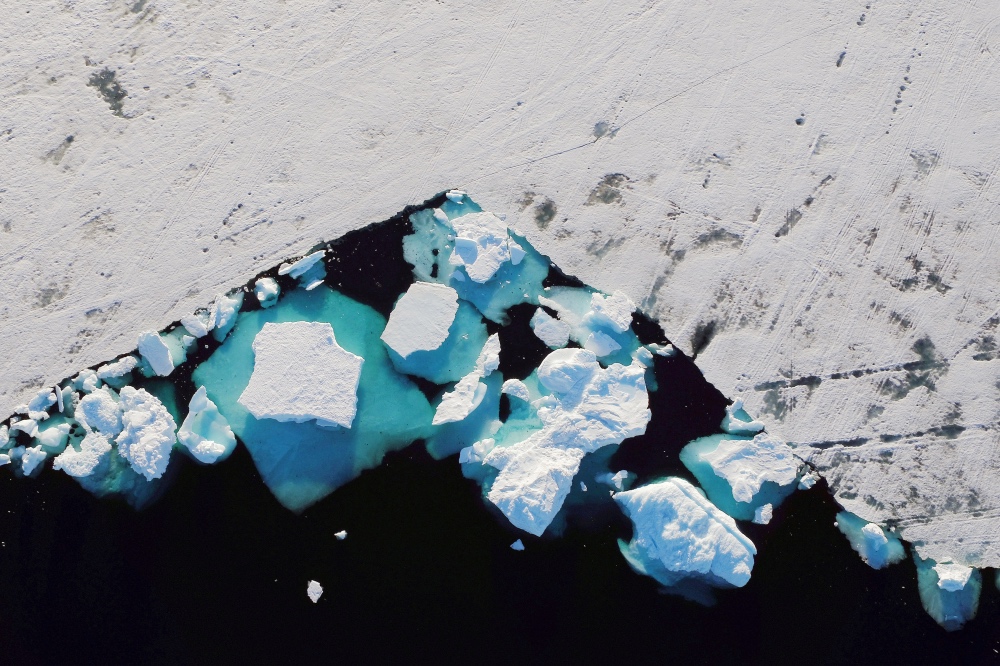Geneva, Swtizerland
Reuters
The hot air that smashed European weather records this week looks set to move towards Greenland and could cause record melting of the world’s second largest ice sheet, the United Nations said on Friday.
Clare Nullis, spokeswoman for the UN World Meteorological Organization, said the hot air moving up from North Africa had not merely broken European temperature records on Thursday but surpassed them by two, three or four degrees Celsius, which she described as “absolutely incredible”.
“According to forecasts, and this is of concern, the atmospheric flow is now going to transport that heat towards Greenland,” she told a regular UN briefing in Geneva.
“This will result in high temperatures and consequently enhanced melting of the Greenland ice sheet,” she said. “We don’t know yet whether it will beat the 2012 level, but it’s close.”

An iceberg floats in a fjord near the town of Tasiilaq, Greenland, on 18th June, 2018. PICTURE: Reuters/Lucas Jackson/File Photo
Nullis cited data from Denmark’s Polar Portal, which measures the daily gains and losses in surface mass of the Greenland Ice Sheet.
“In July alone, it lost 160 billion tonnes of ice through surface melting. That’s roughly the equivalent of 64 million Olympic-sized swimming pools. Just in July. Just surface melt – it’s not including ocean melt as well.”
The Greenland Ice Sheet covers 80 per cent of the island and has developed over many thousands of years, with layers of snow compressed into ice.
The dome of ice rises to a height of 3,000 metres and the total volume of the ice sheet is approximately 2,900,000 cubic kilometres, which would raise global sea levels by seven metres if it melted entirely, according to the Polar Portal website.
Greenland had not had exceptional weather this year until June, but its ice had been melting rapidly in recent weeks, she said.
The warmer air also had implications for Arctic ice extent, which was nearly the lowest on record as of 15th July, Nullis said.
She said increasingly frequent and intense heatwaves were linked to manmade climate change.
“What we saw with this one was that temperature records weren’t just broken, they were smashed.”
She cited a study by the Britain’s Met Office which found that by 2050, record-breaking heatwaves would happen every other year.






